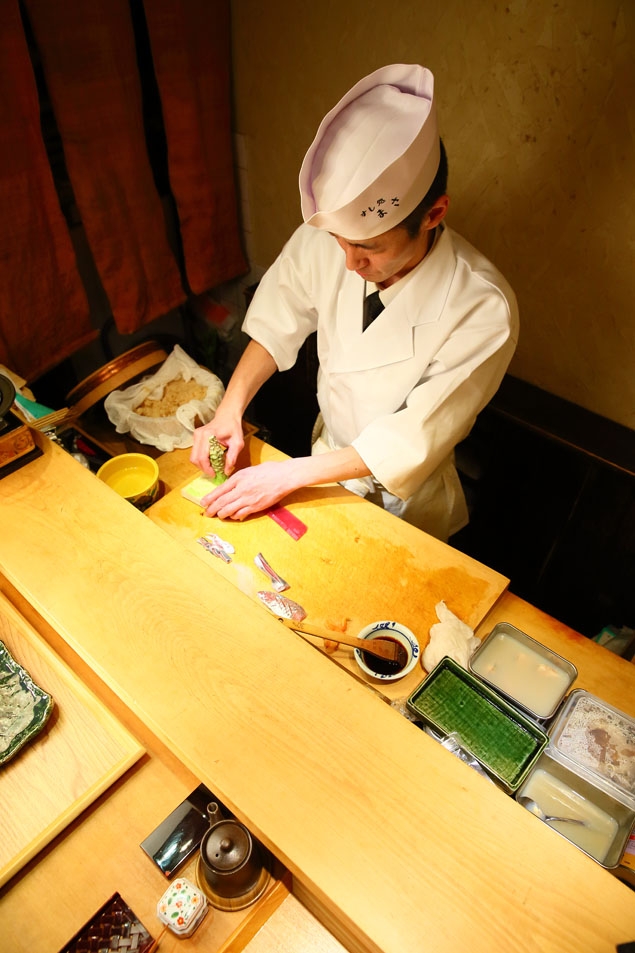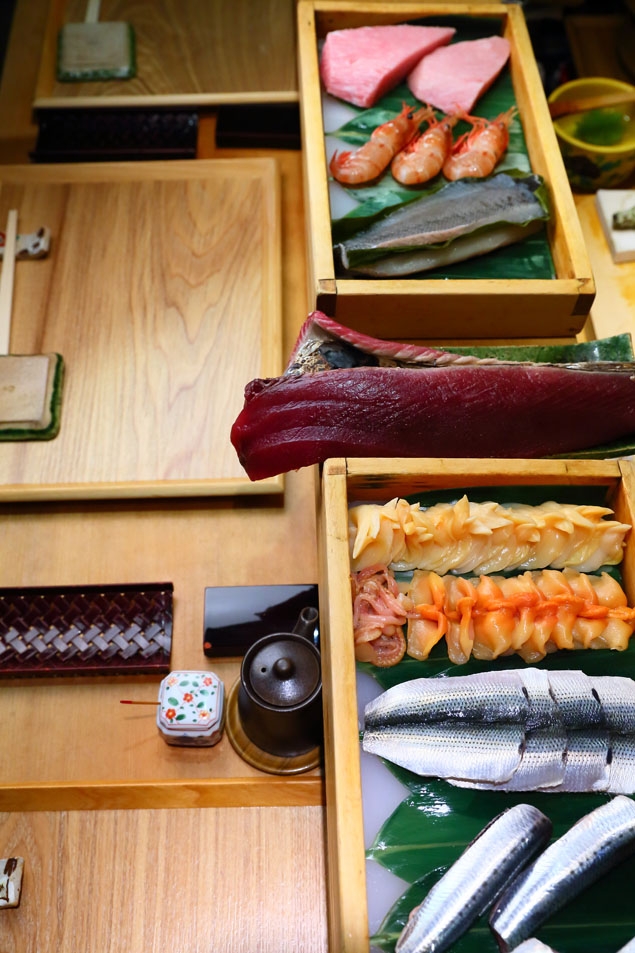Warm Welcome at a Pocket-sized Sushi Bar
Sushi Dokoro Masa in Tokyo’s Shinbashi district is a surprisingly small sushi restaurant, run by a chef truly dedicated to service.Offering meticulously prepared food of outstanding flavor, it is little wonder this place is booked out for the next five years.

The Japanese people have long enjoyed conversation in intimate spaces: the ideal sushi bar reflects that tradition
Finding Ingenious Ways to Utilize a Confined Space that Take into Account the Customer’s Line of Sight

The sushi is made right there, giving diners a front-row view of the chef’s knife work, skill, and tense concentration. The taste is superb, of course, but the whole experience represents the ultimate in sushi service.
Pass through the curtain and open the door into a cube-like space completely filled by three chairs and a blond wood counter with a compact set of storage shelves behind it. At just six square meters this small, spartan space would leave any first-time visitor slightly bewildered. Welcome to Sushi Dokoro Masa.
Owner Masaru Suzuki has been running this sushi bar for six years now. His previous restaurant was much larger at just over 46 square meters, seating 30 at the counter and tables. Although business was good, it was a one-man operation. Orders did not go through smoothly, and he says customers often complained about waiting too long.
“Whenever a cluster of customers turned up at once, I’d start running behind with the orders, no matter how fast I churned out the sushi. It was hard to do the work properly, and impossible to cater to individual demands. Inevitably I gave off a pretty unfriendly vibe, which as you can imagine didn’t do much for the atmosphere. It was frustrating.”
Eventually Suzuki began to think he would rather open a sushi restaurant that was smaller in scale but would allow him to serve customers properly, and do the job the way he really wanted.
Finding Ingenious Ways to Utilize a Confined Space that Take into Account the Customer’s Line of Sight

Suzuki is on the job from morning to night, buying ingredients early in the day, preparing them for use, serving customers as he makes the sushi, then cleaning the premises from top to bottom after closing. Because he does it all by himself, he is also careful to look after his health.
Suzuki has come up with various ingenious ways to optimally use the restaurant’s limited space. Most of his customers are couples, and a lot of reservations are for two pairs, or four people. However, there are only three seats in sight. Inquiring after the other one, we were shown an extra wooden chair stowed away upside down below one of the visible seats. The entrance, which originally consisted of a single sliding door, has also been converted into four doors that can slide left and right from the center, eliminating the need for everyone to stand up whenever one person wants to leave to go to the toilet.
Clever use of space is not just about overcoming a lack of space, but about consideration for customers.
In such a small dining establishment, objects one wouldn’t normally want customers to see, such as dirty dishes, are visible. Light-reflecting stainless steel sinks and cooking utensils are not especially pleasant for customers to look at either. Suzuki therefore devised a three-tiered arrangement in which the sink sits below the chopping board, and the refrigerator below the sink.
Obviously, no matter how skillfully the space is used, it is still cramped. The inconvenience of not having room for every essential remains. There is no landline or fax for bookings. In Japanese cuisine, dishes and plates are switched with the seasons: cooling glass for summer and earthy ceramics in winter, but naturally there is no space to keep these. Suzuki stores the dishes in his garage at home, moving them to the restaurant as needed.
